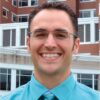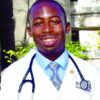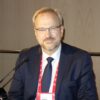![1]()
News
Heart failure guidelines updated
September 5, 2017
What new evidence is available to guide heart failure (HF) management?
![1]()
News
Triple therapy reduces exacerbations in patients with symptomatic COPD
September 4, 2017
Does triple therapy (long-acting beta2-agonist, long-acting muscarinic antagonist, and inhaled corticosteroid) reduce exacerbations in patients with symptomatic COPD?
![1]()
Opinion
Bridging clinical medicine, research, and quality
September 2, 2017
An ongoing research effort seeks to combat catheter–associated urinary tract infections.
![1]()
News
HEART score can safely identify low risk chest pain
September 2, 2017
Clinical Question: Can the HEART score risk stratify emergency department patients with chest pain?
![1]()
Opinion
Using EHR data to predict post-acute care placement
September 1, 2017
Discharge planning does not necessarily have to start late in the hospital stay.
![1]()
News
Prediction tool for mortality after respiratory compromise
September 1, 2017
Can we predict in-hospital mortality of initial survivors of acute respiratory compromise (ARC)?
![1]()
News
FDA approves Vabomere for complicated UTI in adults
August 31, 2017
The new drug, administered by intravenous infusion, is expected to be available before the end of the year.
![1]()
News
VIDEO: Clopidogrel bests ticagrelor in PCI for ACS in real-world study
August 30, 2017
BARCELONA – Fewer adverse events seen with less potent platelet inhibition in contemporary practice in CHANGE DAPT.
![1]()
News
HERDOO2 may guide duration of treatment for unprovoked VTE
August 30, 2017
Can HERDOO2 guide anticoagulation cessation in women with unprovoked venous thromboembolism (VTE)?
News
Simplified HOSPITAL score predicts 30-day readmissions
August 29, 2017
Clinical Question: Will a simplified HOSPITAL score accurately predict 30-day readmissions?




